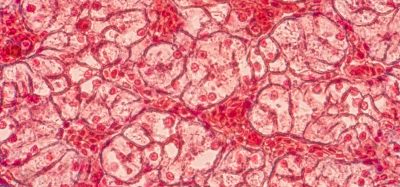Researchers use CRISPR-Cas9 to target retinal angiogenesis.
Posted: 25 July 2017 | Dr Zara Kassam (Drug Target Review) | No comments yet
Researchers have used CRISPR-Cas9 to target retinal angiogenesis via an adeno-associated virus to deliver genomic edits to target vascular endothelial cell growth factor…


Researchers have used CRISPR-Cas9 to target retinal angiogenesis. An adeno-associated virus (AAV) was used to deliver genomic edits to target vascular endothelial cell growth factor 2 (VEGFR2). A single injection of this therapy was able to prevent retinal angiogenesis in preclinical models.
Dr Hetian Lei, at Schepens Eye Research Institute of Mass, said: “We know that VEGFR2 plays an essential role in angiogenesis and can be utilised to edit the VEGFR2 gene, preventing intraocular pathological angiogenesis.”
Despite the success of vascular endothelial cell growth factors inhibiting neovascular growth and lessening vascular leakage in retinal diseases such as proliferative diabetic retinopathy (PDR) and age-related macular degeneration (AMD), several therapeutic challenges remain – namely a need for sustained treatment and a modality to treat the significant number of patients who do not respond to anti-VEGF therapies.
A feature of various eye diseases, pathological intraocular angiogenesis presents clinically when blood vessels in the retina begin to grow new, abnormal blood vessels on the surface of the retina. As the damage progresses, these vessels can leak, rupture, or cause retinal detachment leading to impaired vision.
As this genomic editing gains traction in virtually all medical fields, we are cautiously optimistic that this powerful tool may present a novel therapy to prevent vision loss in eye disease marked by intraocular pathological angiogenesis,” said Dr Lei, “While further study is needed to determine safety and efficacy of this approach, our work shows that the CRISPR-Cas9 system is a precise and efficient tool with the potential to treat angiogenesis-associated diseases.”
Related topics
Genomics, Molecular Targets
Related conditions
age-related macular degeneration (AMD), proliferative diabetic retinopathy (PDR), retinal angiogenesis
Related organisations
Schepens Eye Research Institute of Mass
Related people
Dr Hetian Lei







